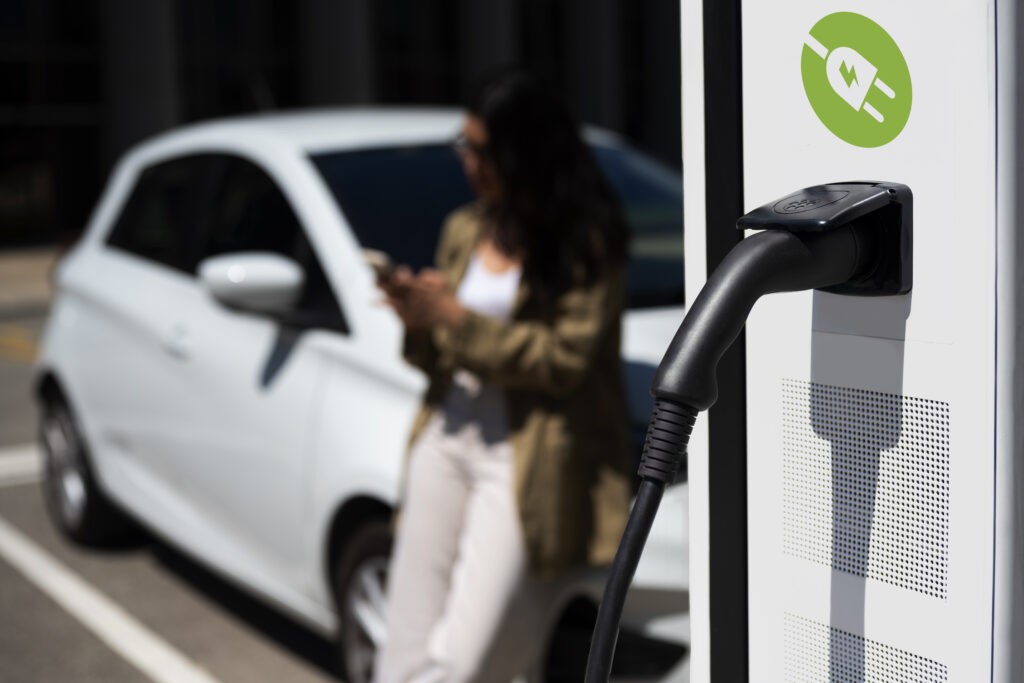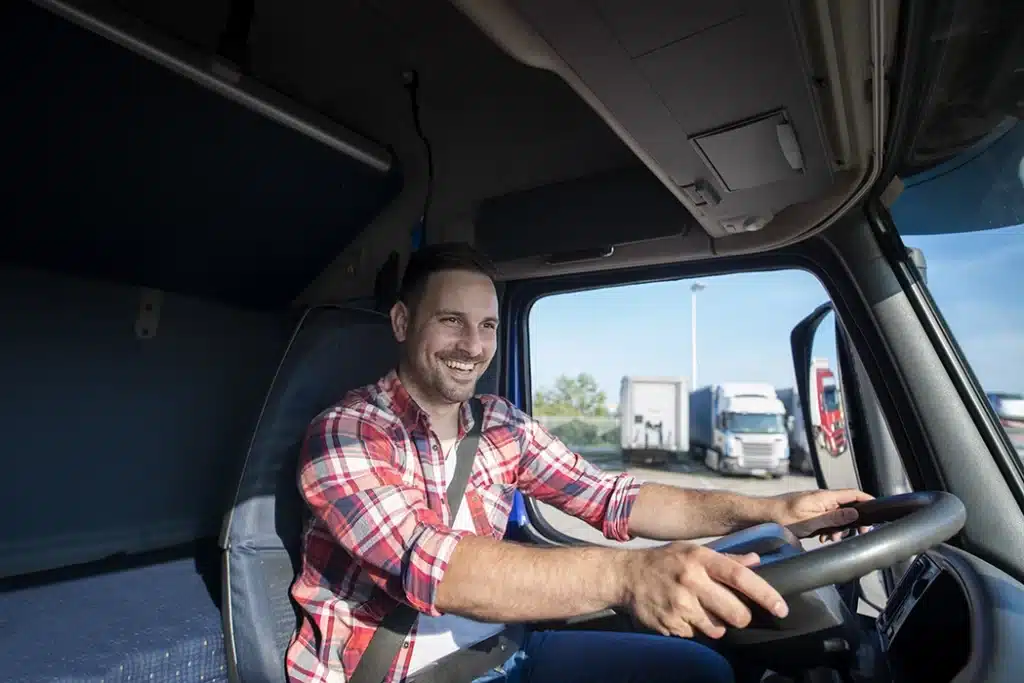Have you ever wondered how your car knows the quickest route or can call for help in an emergency? That’s telematics at work. This sophisticated technology merges telecommunications and informatics to enhance vehicle functionalities and their operational systems.
By gathering and transmitting vehicle data, telematics enables real-time tracking, automated emergency responses, and remote diagnostics, making your driving experience safer and more efficient.
Why is Telematics Important to the Transportation Sector?
Imagine your fleet of vehicles as a team of athletes: The right coach knows where they need to be, their physical condition, and how they can cross the finish line most efficiently. That’s telematics at play—a technological coach for your vehicles offering real-time insights and strategic guidance.
For those new to telematics, it can seem like stepping into a future where vehicles don’t just drive but communicate—sending crucial data on their health and performance and making sure they’re running at peak performance. This is invaluable for fleet managers and drivers to minimize downtime, enhance safety, and cut significant costs.
In this blog series, we’ll break down the concept of telematics. We’ll explore how this technology is leading the charge towards a future with autonomous vehicles and smarter, electric fleets.
Here are some key questions we’ll answer:
- How can telematics turn every vehicle in your fleet into a star performer?
- What immediate benefits does telematics offer to everyday fleet operations, especially for those just starting to use this technology?
- What challenges might fleets face when integrating telematics, and how can they solve them?
- As we look to the future, what are the upcoming innovations in telematics to be aware of?
We’ll dive into these questions to give you the insights to make telematics work for you. Let’s make your fleet a winning team.

How Does Telematics Help Develop Autonomous Vehicles?
Telematics is a key player in the development of self-driving cars. It involves systems that gather and send a lot of important data from the car’s sensors and GPS, which helps the car understand where it is and what’s happening around it. This information is crucial because it allows the car to make smart decisions, like changing speed or direction safely, without human input.
For example, telematics helps a self-driving car know when to slow down if there’s traffic ahead or reroute to avoid a roadblock. It’s like giving the car a sense of awareness, which is essential for it to operate on its own safely and efficiently.
What Are Some Examples of Telematics in Self-Driving Cars Today and What’s Coming?
Right now, telematics is used in several ways to improve how self-driving cars work. Companies like Tesla and Waymo are leaders in this area. They use telematics to collect data from their cars to continually improve how those cars drive themselves.
For instance, Tesla is making huge strides in its Autopilot and Full Self-Driving features by collecting a lot of data from its cars on the road. This data comes from cameras and sensors in the cars, and Tesla uses it to teach their computer systems how to drive better. The more data they collect, the more they can improve safety and add new features through updates that are sent to the cars over the internet.
Beyond just making driving safer, Tesla also uses this data to enhance the overall software in their cars, which improves things like battery life and how well different features work. This approach is not just about making cars that drive themselves; it’s about using data to make the entire experience of owning a Tesla better, from manufacturing to daily driving.
Looking ahead, the possibilities for telematics in self-driving cars are very exciting. As cities become smarter and more connected, telematics will:
- Enable communication with traffic infrastructure: Cars will communicate with traffic lights and parking spots to make driving smoother and less congested.
- Utilize dash cams and sensors: These devices will gather real-time data to enhance safety and efficiency.
- Integrate advanced diagnostic systems: These systems will predict and adapt to situations better, foreseeing potential hazards on the road before they happen.
This means that self-driving cars will not only become safer and more reliable but will also play a big part in making our transportation systems smarter and more eco-friendly.

How Does Telematics Manage and Optimize Electric Vehicle (EV) Fleets?
Telematics is transforming the management and optimization of EV fleets by providing detailed insights into every aspect of fleet operation. This technology helps fleet managers monitor vehicle status in real time, ensuring that each vehicle is running at its best and addressing any issues promptly.
One of the key aspects of telematics in EV fleets is route optimization. This involves using real-time data to determine the most efficient paths for vehicles. By analyzing traffic patterns, road conditions, and the specific energy requirements of electric vehicles, telematics systems can suggest routes that minimize energy consumption and increase the number of deliveries or trips without needing an extra charge.
What Role Does Telematics Play in Battery Health Monitoring and Energy Management?
Battery health monitoring is another critical feature facilitated by telematics. This involves continuously assessing the condition of the battery to predict its lifespan and efficiency. Telematics systems collect data such as charge cycles, temperature, and voltage, which are vital for predicting battery degradation over time. This data helps fleet managers plan maintenance and replacements before failures occur, ensuring reliability and reducing downtime.
In terms of energy management, telematics plays a significant role in ensuring that electric fleets operate within their optimal energy consumption parameters. It provides analytics that help understand energy usage patterns and identify areas for improvement. For example, telematics can highlight instances of high energy consumption and suggest behavioral changes or route adjustments to improve efficiency.
By integrating these functionalities, telematics not only enhances the operational efficiency of electric fleets but also contributes to a more sustainable and cost-effective fleet management approach. This technology is essential for businesses looking to transition to electric vehicles, as it maximizes the benefits of EVs while minimizing their unique challenges.

How Are Advancements in Vehicle-to-Everything (V2X) Communications Shaping the Future?
Advancements in Vehicle-to-Everything (V2X) communications are making our roads safer and traffic smoother. This technology allows cars to “talk” to each other and to the world around them, including traffic lights and pedestrian crossings. Here’s how it works and what it means for us:
Key Products and Technologies in V2X Communications:
- Dash Cams and Sensors: Think of these as the car’s eyes and ears. They collect real-time information about the surroundings and share it with other vehicles and traffic systems. This helps cars anticipate and respond to traffic conditions, reducing the risk of accidents.
- Diagnostic Systems: These systems are like having a doctor for your car. They monitor the vehicle’s health and can predict issues before they become serious, ensuring timely maintenance and fewer breakdowns.
- Traffic Signal Integration: Imagine your car knowing when a traffic light will change. V2X technology allows cars to receive signals from traffic lights, helping drivers adjust their speed in advance. This means fewer sudden stops and smoother traffic flow.
- 5G and Cellular-V2X (C-V2X): This is the high-speed internet for cars. With 5G, cars can communicate faster and more reliably, which is crucial for real-time updates and quick decision-making, especially for self-driving cars.
- Cooperative Perception (CP) Systems: These systems help cars see more of what’s happening around them. By sharing information with other vehicles and infrastructure, cars can detect obstacles and hazards that are out of their immediate view, enhancing safety.
As cities adopt more smart technologies, V2X communication will play a crucial role in making driving safer and more efficient. Technologies like edge computing and blockchain help manage all the data securely and efficiently, leading to better and quicker decision-making on the road.
So, whether it’s reducing traffic jams, preventing accidents, or making sure your car is in top shape, V2X technology is paving the way for a smarter and safer driving future.
Why is Real-Time Data Transmission Crucial for Vehicle Performance and Safety?
Real-time data transmission is crucial in modern transportation for continuous monitoring and immediate response capabilities. It allows for the constant sending and receiving of data between a vehicle and a control center. This real-time communication is vital for maintaining vehicle health, ensuring driver safety, and optimizing performance on the go.
For instance, Zenduit’s telematics solutions offer real-time alerts and updates on vehicle status, such as tire pressure warnings, engine health, and fuel levels, directly to fleet managers. This immediate flow of information is essential for making quick decisions that can prevent breakdowns and reduce maintenance costs.
Moreover, in emergency situations, real-time data transmission can be lifesaving. For example, in the event of a crash, telematics systems can automatically notify emergency services with precise location data, potentially speeding up response times and improving outcomes for everyone involved.
Final Thoughts
From the integration of telematics in autonomous transportation vehicle technology, enhancing safety and decision-making capabilities, to its pivotal role in managing and optimizing electric vehicle fleets through sophisticated energy management and battery health monitoring, telematics stands at the forefront of the automotive industry’s future.
Looking ahead, our next post will further explore the expansive role of telematics in shaping future transportation. We’ll dive into how emerging technologies and innovative telematics solutions, such as those offered by Zenduit, are not just transforming individual vehicle operations but are setting the stage for broader changes across cities and global transportation networks. Join us as we continue to uncover how telematics technology is not merely adapting to the future but actively defining it. Stay tuned!







































